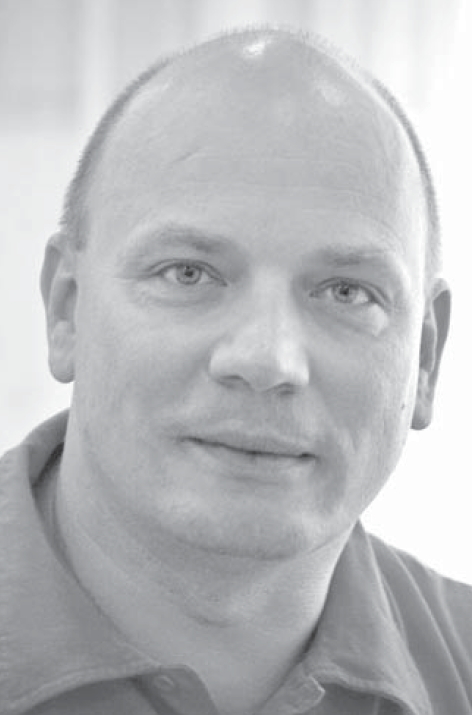REALIZATION BY WINDSURFERS OF KEY PHYSICAL PROPERTIES WHILE PASSING COMPETITIVE ROUTE
Фотографии:
ˑ:
J. Jaszczur-Nowicki, professor, Dr.Hab.
V.L. Smulski, professor, Dr.Hab. Gdansk academy of physical education and sport, Poland
G. Man'ko, Ph.D. Collegium Medicum Uniwersytet Jagiellonski
T. Hammera, Ph.D.
D. Kruszkowsi, Ph.D. Gdansk academy of physical education and sport, Poland
Key words: windsurfing, external conditions, physical qualities.
Introduction. Training of windsurfers and representatives of other sports is aimed at achievement of the personal maximum technical, physical and mental skill levels due to windsurfing specifics and requirements stipulated by competitive conditions. The obvious currency of the statement provokes the necessity of working rational, science-based approaches to planning of the training process dedicated to development of physical qualities and selection of its objective evaluation criteria. The allocated characteristics of qualitative aspects of motor activity can be such criteria for elite windsurfers [5]. The orientation to these indices and the allocated criteria of physical fitness promote monitoring of the means and methods of development of physical qualities in different periods of the year training cycle along with their efficient individual selection.
Therefore, the state of qualitative aspects of windsurfers’ motor activity is to be defined first of all within the phased training monitoring.
The recommendation is based on the compliance of the primary requirements to the indices used in control, determined by the common theory of training of Olympic athletes. In particular, we speak on their correspondence to the specifics of certain sport and the qualification peculiarities of athletes, information value and reliability [1, 3].
The issue is especially crucial due to the specificity of the motor pattern of windsurfers when covering various parts of the competitive course under different conditions of wind force and direction and water surface condition.
The findings of our study [4] provided the answer to the first part of the considered question, while the second part was still understudied.
The purpose of the study was to reveal the degree of realization by qualified windsurfers of the leading for them physical qualities while covering a competitive course under various wind force and water surface conditions.
Materials and methods. 8 leading Polish windsurfers specializing in the Olympic class RS:X were the subjects of the research, including one active world champion and three prize-winners of world and European champions (aged 18,7±3,8, experinece in sport – 6,9±4,0 years).
The criteria, we had determined earlier, that was suggested to form the generalized model of physical fitness of qualified windsurfers, laid the basis for allocation and estimation of key physical qualities [5]. Specifically, such motor qualities and tests for their assessment were the ones, where the indices are closely correlated with the ranking of the level of sport skills of windsurfers.
Results and discussion. The analysis of the subjective estimation of intensity of the displayed physical qualities most important for qualified windsurfers when covering the whole competitive course in general revealed the wider range of differences between the examined indices at single parts of the route in view of wind force and water surface condition compared to the previous data [4].
The adduced data indicate to the expressed inequality of the level of requirements to physical abilities, made to athletes by the diverse variety of external conditions of competitive activity in windsurfing. Hence, there is a reason to believe that consideration of the indicated features is of great value in elite sport, where success of competitive performance can often depend on the attention having been paid in an athlete’s special physical training to the variety inherent in every sport.
Conclusions. The subjective estimation of the intensity of the displayed physical qualities most essential for qualified windsurfers in covering the competitive course has revealed a wide variance between the examined indices regarding wind force and water condition.
The research results can lay the basis for the allocation of the specific level of specialized physical training of qualified windsurfers, caused by the relevant inconstancy of external competitive conditions.
References
1. Godik, M.A. Sport metrology / M.A. Godik. - Moscow: Fizkultura i sport. - 1988. - P. 146-147. (In Russian)
2. Dungasova, G.V. Ergonomics / G.V. Dungasova. - Kiev: Vyscha Shkola. - 1976. - P. 128-139. (In Russian)
3. Platonov, V.N. The general theory of training Olympic athletes / V.N. Platonov. - Kiev: Olimpiyskaya literatura. - 1997. - P. 583 (In Russian)
4. Jaszczur-Nowicki, J. Windsurfers’ rating intensity level when covering a competitive course under different wind speed and water surface conditions / J. Jaszczur-Nowicki, D. Kruczkowski // Teoriya i praktika fizicheskoy kultury. – 2011. – № 8. – P. 61–64. (In Russian)
5. Jaszczur-Nowicki, J. Kryteria oceny przygotowania fizycznego zawodników trenujących windsurfing na etapie mistrzostwa sportowego / J. Jaszczur-Nowicki // Kierunki optymalizacji treningu i systemu szkolenia w sporcie wyczynowym: retrospekcja i perspektywy/pod red. Waldemara Moski i Jarosława Jaszczur-Nowickiego. – Gdańsk: Wyd. AWFiS 2012. – S. 87–97: tab. – Bibliogr. s. 96–97.
6. Bangsbo, J. The Physiology of Soccer / J. Bangsbo. – Copenhagen. – 1993. – 155 p.
7. Reilly, T. A motion analysis of work-rate in different positional roles in professional football match-play / Т. Reilly, V. Thomas. – J. Hum. Mov. Stud. – 1976. – P. 87–97.
8. Pilicz, S. Description of the International Physical Fitness Test / S. Pilicz, T. Ulatowski [Opis Mięzynarodowego Testu Sprawności Fizycznej. W: Zastosowanie metod naukowych na potrzeby sportu (pod red. T. Ulatowskiego. – Warszawa. – 2002. – S. 189–206.
9. Piórko, A. Posturography as a method of assessing the dynamics of human balance / А Piórko [Posturografia jako metoda oceny dynamiki układu równowagi człowieka] – Polski przegląd medycyny lotniczej. – 1996. – № 2. – T. 2.
10. Thoden, J. Testing Aerobic Power. Physiological Testing of High Performance Athlete / J. Thoden // Champaign, Illinois: Human Kinetics Books. – 1991. – P. 107–173.
Author’s contacts: rektor@awf.gda.pl


